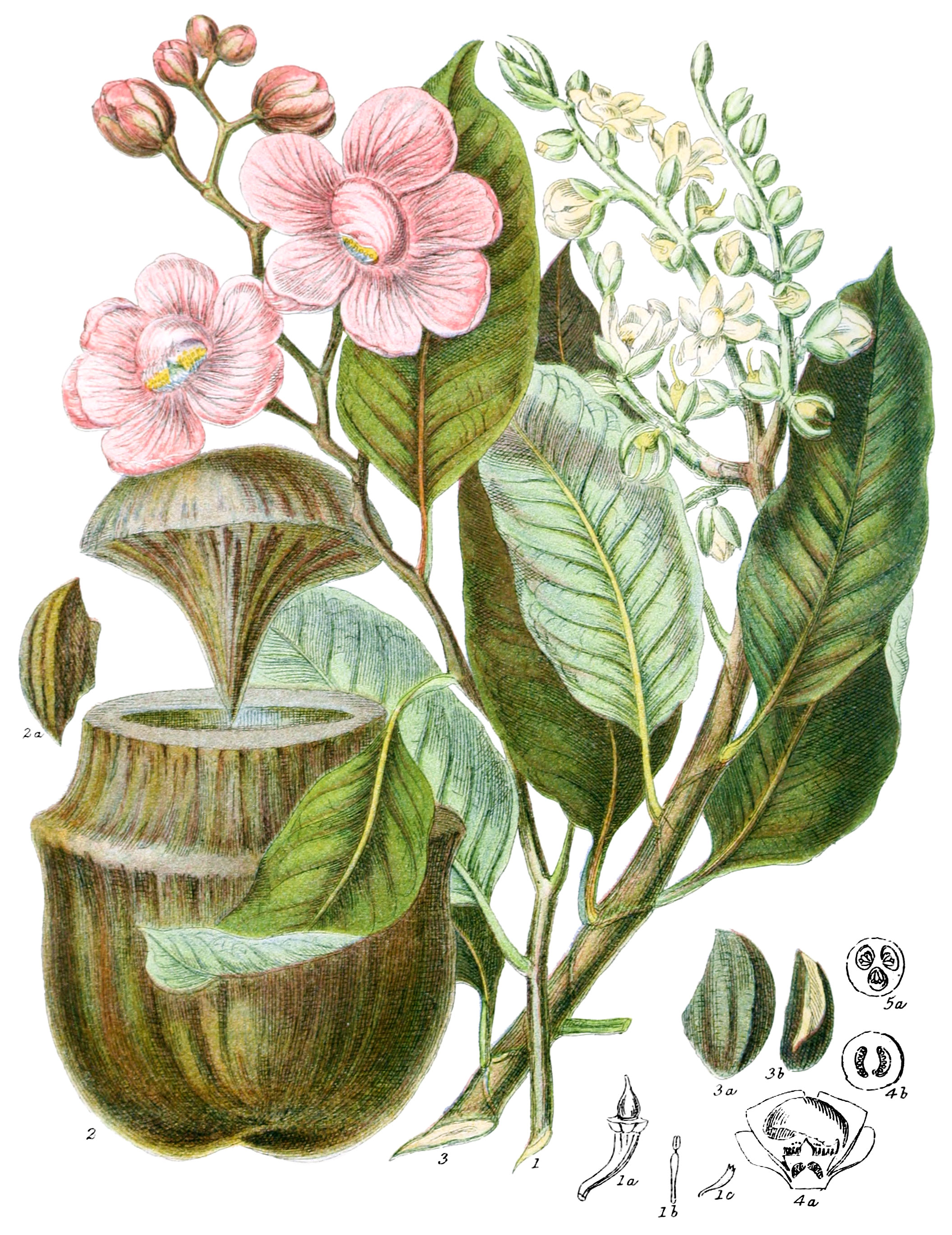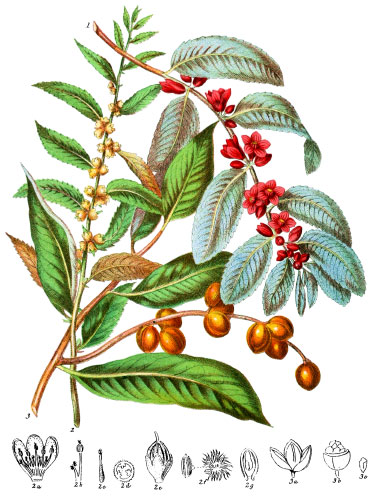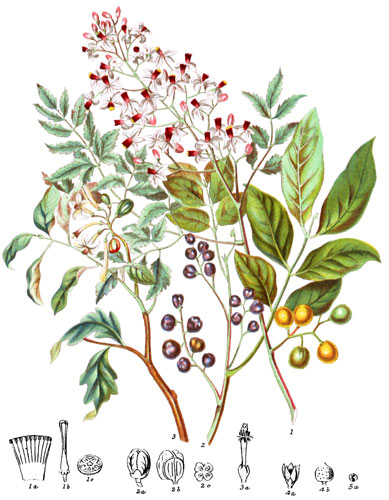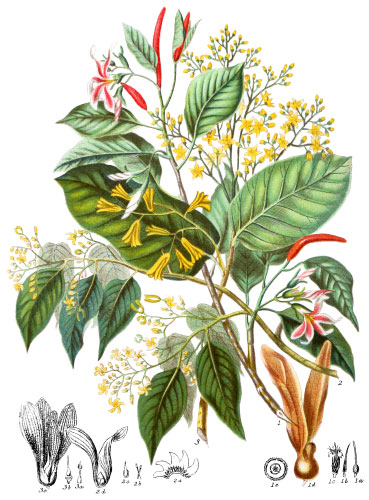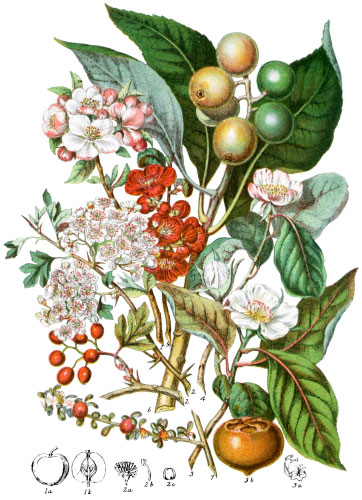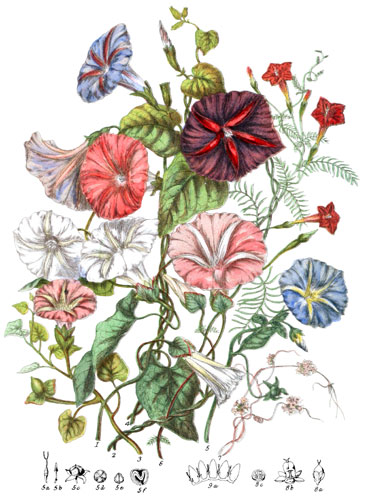Key characteristics
Large trees, with alternate leaves, either entire or toothed at the edges, without pellucid dots, having minute stipules, which soon fall off. The flowers are solitary, or grow on the ends of the leaf-branches, or on separate branches. The calyx is from two to six-leaved, or united in a tube below, having a divided limb; it is either valvate or imbricated in the bud state. The corolla has six petals, sometimes cohering at the base, imbricated in the bud. The stamens are of indefinite number, placed upon a disk which surmounts the ovary; a portion of the filaments is united into a tough substance, which is prolonged into a hooded petal-like body, bending over and concealing the pistil and surrounding stamens; the inner surface is sometimes lined with filaments without anthers. The ovary is below the disk, from two to six-celled; the ovules are few or many, attached to the central axis; the stigma is simple. The seed-vessel is a woody capsule, of a round or long shape, either opening spontaneously with a lid when the seeds are ripe, or remaining closed. The seeds are covered by a thick integument without albumen.
These trees have affinity with the Myrtle tribe, but the alternate and often notched leaves without pellucid dots distinguish them clearly.
The very remarkable hooded plate of additional stamens is the striking character of this tribe.
Select plants in this order
Not all plants listed are illustrated and not all plants illustrated are listed.
- Lecythis was so named from the Greek Lekythos, an oil-jar, owing to the resemblance of the form of the seed-vessel. The lid separates at the upper ridge of the vase where the petals were attached; the lower ridge is the circle of the sepals of the calyx. There is considerable strength and toughness through every part of these trees, the midrib of the leaf is composed of very strong fibres, the flowers are placed on thick woody stalks which enlarge at the top, the seed-vessels are of such solid woody substance that they serve as drinking vessels to the natives.
- Lecythis grandiflora (1) is a noble tree in the ancient forests of Brazil; the flowers are the finest in size and colour of the whole genus; the large seeds are of pleasant flavour, and much esteemed; they yield also a milky juice, which is considered a remedy for coughs.
- L. Olliaria (2) is an extremely majestic tree, growing to the height of a hundred feet, spreading into an enormous vaulted crown; in spring, when the young leaves come forth of a red hue, it has a singularly beautiful appearance; the blossoms of this species are white. The large seed-vessels have been long known in this country, being of a nature to bear transport safely; the almond-shaped seeds are, like those of nearly all the tribe, eatable, either in a raw or cooked state; by some persons they are preferred to the European almond, but in general they leave a disagreeable bitter taste in the mouth, peculiar to many tropical fruits. Monkeys and birds make their favourite repasts on them. The bark of L. Olliaria is composed of more than a hundred fine layers, resembling thin, smooth paper; the Indians find it very useful for wrapping tobacco for their cigars.
- L. amara bears a seed-vessel three inches in diameter, called by the colonists petite marmite de singe.
- L. parviflora and L. bracteata are species which abound in Brazil and Guiana. The Portuguese in Brazil are very ingenious in making boxes of the great capsules.
- Bertholletia was so named after Berthollet, a celebrated chemist and botanist.
- B. excelsa (3) is a lofty tree, of the greatest longevity in Guiana, being known to live a thousand years. The seeds are contained in a large round woody capsule, and are well known in England as Brazil nuts.
- The fruit of Couroupita Guianensis is the abricot sauvage of Cayenne, and the cannon-ball tree of English colonists, has a pleasant flavour of wine when fresh, but whilst decaying, acquires a most disagreeable odour. The petals, if torn and exposed to the air, become blue at the edges. The shell of the fruit is employed for domestic uses like the calabash.
- Couratari Guianensis is a tree sixty feet in height, the wood is white in the outer circumference, red in the centre; the native Indians make a strong cord of the bark, with which they encircle he stem of the Palm, and thus, with their feet against the tree, and leaning back on the girdle of rope, are enabled dexterously to climb to the summit to gather the fruit or two extract the toddy. The ovary of this genus is three-celled, and contains many ovules; but when the fruit enlarges and ripens, it becomes one-celled, of a slender shape, four inches or more in length, having a central column, to which the seeds are attached in three rows; the capsule remains closed.
Locations
The trees of this tribe are all natives of the hottest countries in South America, more especially of Guiana and Brazil.
Legend
- Lecythis grandiflora, Large-flowred Lecythis. Brazil.
- Ovary.
- Stamen.
- Filament of the Hood.
- Seed-vessel of Lecythis Olliaria. Guiana and Brazil.
- Seed.
- Bertholletia excelsa, Brazil-nut Tree. Brazil.
- Seed.
- Kernel.
-
- Lecythis ovata. Section of the Flower. Guiana.
- Section of the Ovary.
-
- Couratari Guianensis. Cross section of the Ovary.
Explore more
Posters
Decorate your walls with colorful detailed posters based on Elizabeth Twining’s beautiful two-volume set from 1868.
Puzzles
Challenge yourself or someone else to assemble a puzzle of all 160 botanical illustrations.
